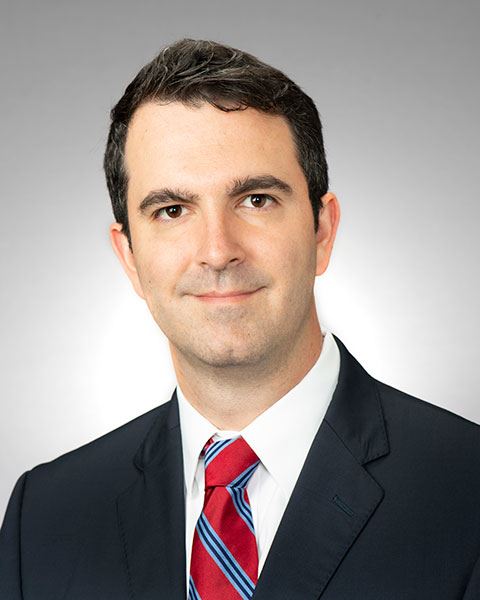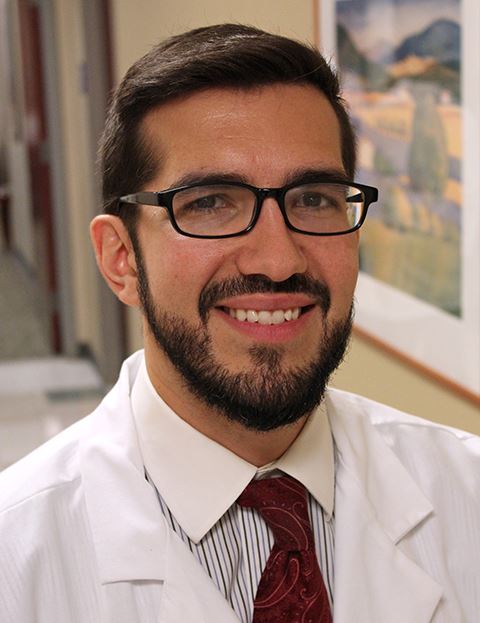“I’m feeling great.”

Marcus Rivera catches bad guys for a living. He is a special agent with the Department of Justice, assigned to the Joint Terrorism Task Force, which is housed at the FBI and investigates everyone from bombers and hijackers to white-collar terrorism financiers.
But on the morning of September 11, 2001, Rivera was working in the Office of Labor Racketeering, investigating organized crime. Running late, he’d turned on the TV to hear the traffic report. The tone of the newscast changed as early reports came in of terrorist attacks on the twin towers of the World Trade Center, at the Pentagon and on a flight that crashed in rural Pennsylvania.
Horrified, Rivera jumped into his government-issued police car and raced to New York City. On the West Side Highway, he saw the second tower in his rearview mirror. “I glanced back to get a better look, and the tower was gone,” he says. Black clouds of toxic dust filled the sky.
Over weeks and months, the law enforcement community aided rescue and recovery operations on “the Pile”— the term first responders coined to describe 1.8 million tons of rubble left by the buildings’ collapse. Rivera put in 14-hour shifts alongside his father and brother, who also worked in law enforcement. “The air smelled bad, and that smell lingered for months,” Rivera says.
Returning to his regular job, Rivera worried that the time he’d spent on the Pile posed a serious health risk. He had reason to be concerned.
Effects On Responders
In January 2006, Rivera lost his first-responder father to glioblastoma, an aggressive brain cancer. “It was recognized as a line-of-duty death,” notes Rivera. “It was heartbreaking—he was only 61.” A few years later, a close friend who’d spent time at Ground Zero also died of glioblastoma.
Some half a million people were exposed to toxic dust, chemicals and fumes in the 9/11 aftermath. Over time, many became sick and died from this exposure. Rivera and many other first responders have registered with the World Trade Center Health Program, a federally funded program providing no-cost monitoring and treatment of WTC-related health conditions. Care is provided through Clinical Centers of Excellence (CCE), including the Rutgers Environmental and Occupational Health Sciences Institute.

In 2017, Rivera began having headaches. An MRI scan at the Rutgers WTC clinic made a finding—but it wasn’t glioblastoma. Instead, Rivera was diagnosed with a left hypoglossal schwannoma, a rare tumor at the base of the skull. Though noncancerous, schwannomas can lead to nerve damage and loss of muscle control.
“While the tumor wasn’t causing any problems, that could change, and then it would have to be treated,” says Rivera. He was referred to Stephen Johnson, MD, a neurosurgeon at Rutgers Cancer Institute of New Jersey, Medical Director of the Gamma Knife Program at Robert Wood Johnson University Hospital (RWJUH) and Assistant Professor of Neurosurgery at Rutgers Robert Wood Johnson Medical School (RWJMS).
“Dr. Johnson said traditional brain surgery would be highly risky,” Rivera says, “but I was an excellent candidate for Gamma Knife treatment.”
A Relaxed Therapy

Unlike traditional brain surgery, noninvasive Gamma Knife radiosurgery entails no incision, bleeding or sutures. Instead, it uses highly focused beams of radiation to target brain abnormalities. “It destroys the tumor, but the surrounding tissue is not harmed,” says Joseph Weiner, MD, radiation oncologist at Rutgers Cancer Institute and Assistant Professor of Radiation Oncology at RWJMS, who performs Gamma Knife radiosurgery with Dr. Johnson at RWJUH.
Still, Rivera was hesitant. “My feeling was, if it’s not broken, why fix it?” he says. But a second opinion eventually confirmed the diagnosis and the need for treatment.
“The location of this tumor on the hypoglossal nerve impairs that side of the tongue, leading to difficulty speaking, swallowing and eating,” explains Dr. Weiner. “More serious problems may arise, including aspiration, where you could develop a serious lung infection. If we waited too long, the tumor might grow, making further treatment even more challenging.”
Rivera decided to go ahead with radiosurgery in December 2021 at RWJUH’s Gamma Knife Center. In the 72-minute outpatient procedure, Rivera’s head was immobilized with a frame, or halo. “Once inside the machine, the patient does not move as the radiation is delivered,” says Dr. Weiner. “Instead, we move the table around. It’s quiet and not claustrophobic.”
 Awake during treatment, Rivera listened to classic jazz. “I felt very calm and relaxed,” he says. With its precision accuracy, Gamma Knife treatment can be delivered in one to five sessions, and Rivera needed just one.
Awake during treatment, Rivera listened to classic jazz. “I felt very calm and relaxed,” he says. With its precision accuracy, Gamma Knife treatment can be delivered in one to five sessions, and Rivera needed just one.
Recovering at home, Rivera experienced moderate swelling at the tumor site that temporarily compressed the nerve and affected his speech, but medication reversed it. “The fact that he had swelling tells us that his tumor was on the verge of causing real problems, possibly waiting to paralyze his nerve irreversibly,” Dr. Weiner says. “Our timing was good. The odds are overwhelmingly in his favor that he’ll never need any other treatment for this tumor.”
After three weeks, Rivera went back to work. “At first, I had some headaches, but they went away,” says Rivera, who will continue to be monitored with MRIs. “I’m feeling great.”
Learn more about Gamma Knife radiosurgery at Robert Wood Johnson University Hospital.